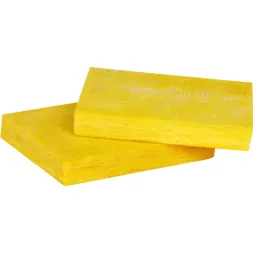Glass Wool Wall Insulation vs. Rock Wool: Which Delivers Better Thermal and Acoustic Performance?
When it comes to wall insulation, choosing the right material is critical to achieving long-term energy efficiency and soundproofing. Two of the most commonly compared options in the construction and industrial sectors are glass wool wall insulation and rock wool insulation. Both are mineral-based materials, but they differ significantly in composition, performance, cost, and application. This article breaks down these differences to help you determine which solution aligns best with your project’s thermal and acoustic needs.
Application and Installation
Where and How They’re Used
Glass wool wall insulation is widely used in residential and light commercial buildings due to its lightweight structure and ease of installation. It's typically available in rolls or batts and is ideal for interior partition walls and cavity wall systems. Rock wool, on the other hand, is denser and better suited for industrial or high-performance environments, such as mechanical rooms or exterior wall cladding where higher thermal resistance is required.
In terms of handling, glass wool is more flexible and easier to cut, which speeds up installation. Rock wool’s rigidity can make it more difficult to fit in tight spaces but provides more structural integrity once in place.
Thermal Performance
How Well Do They Insulate?
Both materials provide excellent thermal insulation, but there are differences in R-value performance. Glass wool generally offers an R-value of around 3.0 to 3.7 per inch, making it effective for standard energy efficiency requirements. Rock wool usually ranges from 3.3 to 4.2 per inch due to its higher density, offering slightly better thermal resistance in colder climates or industrial buildings.
If your project requires superior heat retention—such as in data centers, cold storage facilities, or northern climate constructions—rock wool may be a more appropriate choice.
Acoustic Insulation
Soundproofing Capabilities Compared
Rock wool outperforms glass wool in acoustic applications due to its higher density and structure. It has a Noise Reduction Coefficient (NRC) of up to 1.05, whereas glass wool typically ranges from 0.90 to 0.95. For buildings located near highways, airports, or within industrial zones, rock wool provides a clear advantage in reducing external noise and improving indoor acoustic comfort.
That said, glass wool is still an effective acoustic barrier for everyday residential needs and office spaces where noise levels are moderate.
Fire Resistance and Safety
How They React to High Temperatures
Fire safety is a critical factor in insulation material selection. Both glass wool and rock wool are non-combustible and meet high fire safety standards. However, rock wool can withstand temperatures up to 1,000°C (1,832°F), compared to glass wool’s limit of around 500°C (932°F). This makes rock wool the preferred option in fire-critical areas like electrical rooms or industrial facilities.
Durability and Moisture Resistance
How They Hold Up Over Time
Both insulation types are resistant to mold and microbial growth, but rock wool has superior moisture resistance due to its water-repellent manufacturing treatment. It maintains its performance over time even in humid conditions, whereas glass wool may degrade if exposed to prolonged moisture without proper vapor barriers.
For environments prone to moisture—such as basements, coastal buildings, or regions with high rainfall—rock wool is generally the safer bet.
Cost Comparison
Initial Investment and Long-Term Value
Glass wool is usually the more cost-effective option, with prices ranging from $0.40 to $0.60 per square foot. Rock wool can cost between $0.80 and $1.20 per square foot, depending on thickness and manufacturer. While the upfront cost of rock wool is higher, it often delivers greater long-term value through improved energy savings and reduced maintenance.
Budget-conscious residential builders often choose glass wool, while commercial or industrial projects with higher performance demands may find rock wool a worthwhile investment.
Environmental Considerations
Sustainability and Material Sourcing
Both materials are sustainable, being made from recycled resources. Glass wool typically contains up to 80% recycled glass, whereas rock wool is made from natural basalt rock and recycled slag. Rock wool’s production, however, is more energy-intensive, which may factor into environmental impact assessments for LEED or other green building certifications.
Conclusion: Which One Should You Choose?
The decision between glass wool wall insulation and rock wool insulation largely depends on your specific project needs:
For standard residential or light commercial buildings where budget and ease of installation are priorities, glass wool offers solid thermal and acoustic performance at a lower cost.
For industrial, high-performance, or moisture-prone environments, rock wool stands out for its superior durability, fire resistance, and soundproofing.
Ultimately, both materials are highly effective when used appropriately. By evaluating your building’s thermal demands, acoustic environment, fire safety requirements, and budget constraints, you can make a confident and informed choice that supports long-term performance and safety.


